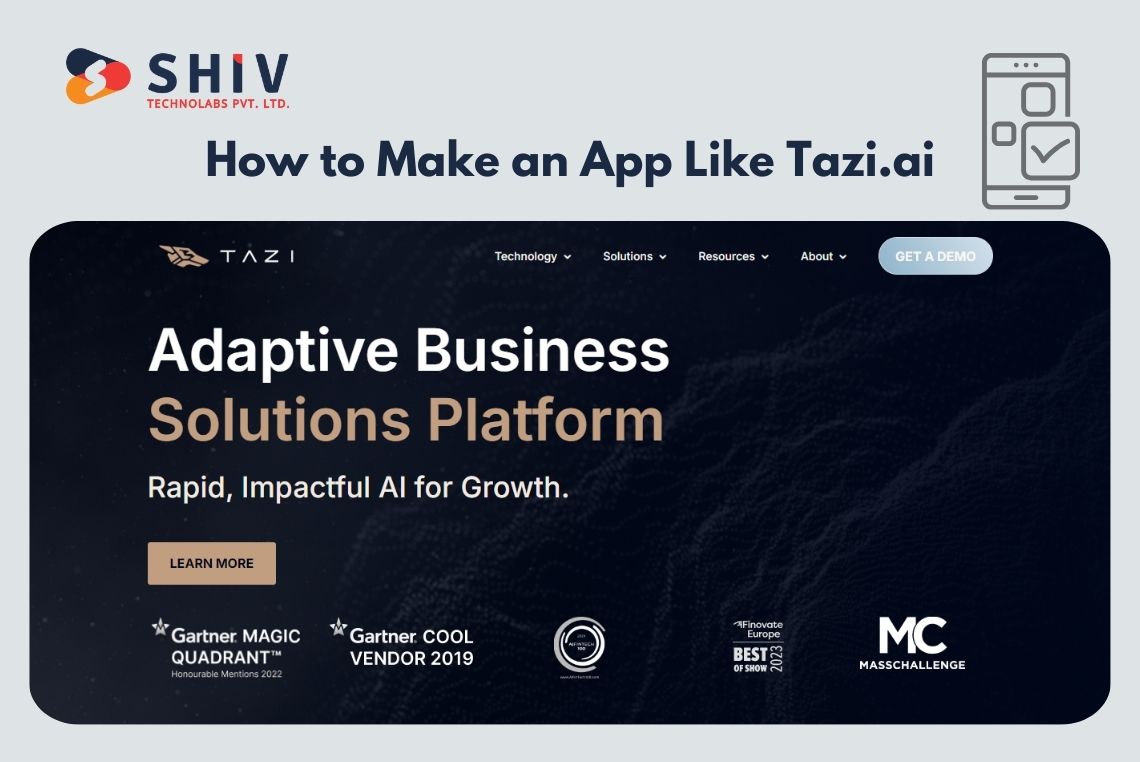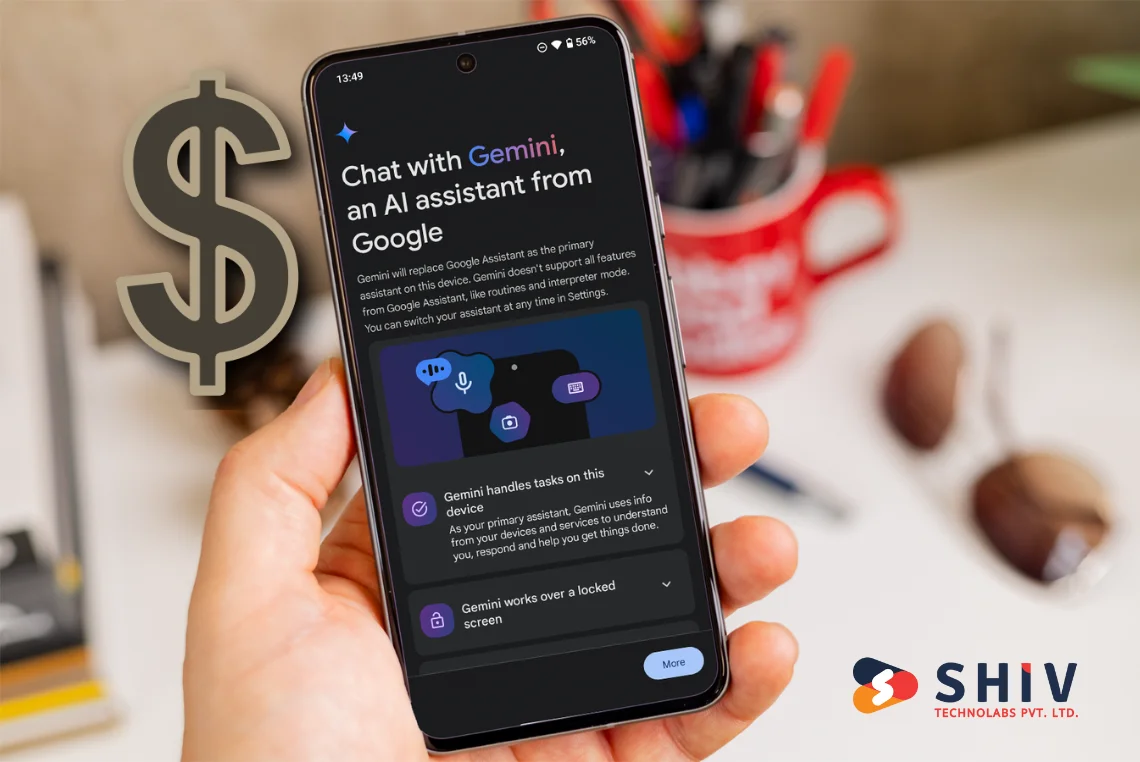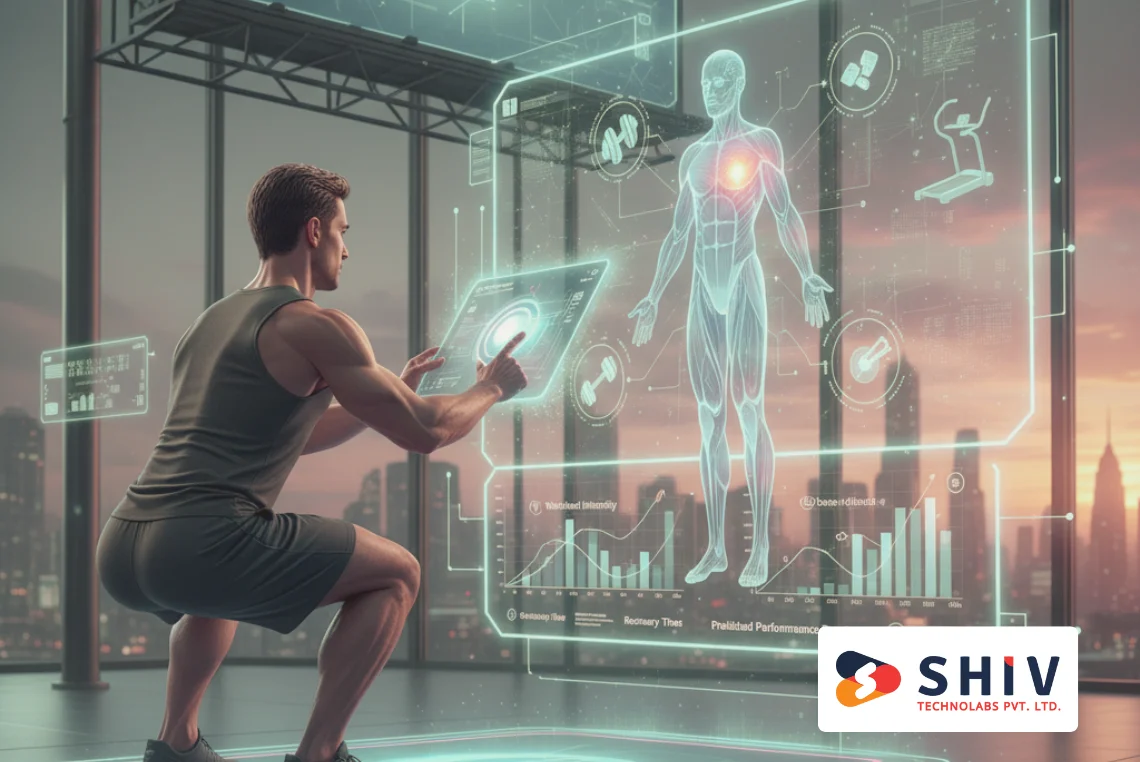Table of Contents
Developing an AI-driven application like Tazi.ai requires a combination of intelligent features, robust technologies, and thoughtful planning. Tazi.ai is an adaptive, machine learning platform designed to empower business users with predictive analytics without needing deep technical expertise. Building a similar application involves various steps, including choosing the right technologies, understanding the features that make such platforms unique, and addressing key user needs.
Top 8 Core Features for a Tazi.ai-like App
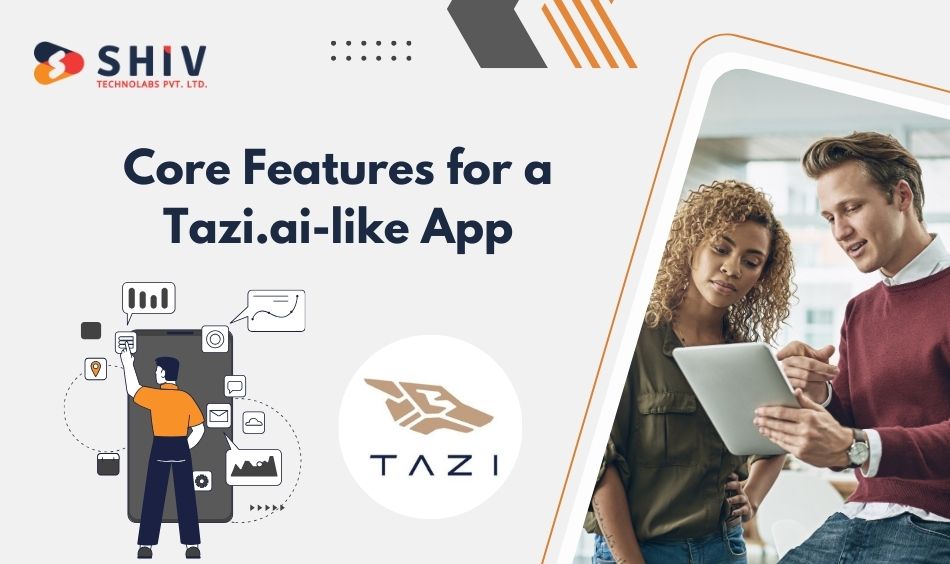
Developing an AI-based platform involves identifying features that set it apart and meet the expectations of users. The following features are critical:
# Automated Machine Learning (AutoML)
At the heart of Tazi.ai is AutoML. This feature allows users with minimal data science knowledge to create and manage machine learning models. AutoML automates time-consuming steps such as data cleaning, feature selection, and model training, making the entire process simpler and more efficient.
# Adaptive Learning
Adaptive learning allows machine learning models to adjust and improve over time based on new data, feedback, or user interactions. Incorporating this feature helps keep models relevant and accurate without constant manual intervention.
# User-Friendly Interface
Tazi.ai is known for its clean and intuitive interface. A dashboard with easy navigation, simple data visualizations, and clear workflows allows users to interact with complex AI models without frustration.
# Real-Time Predictions
Providing real-time predictions based on streaming data is essential for many AI applications. This feature allows businesses to make quick decisions based on the most current information available.
# No-Code/Low-Code Environment
Building a no-code or low-code app empowers non-technical users to create machine learning models without needing to write code. This feature is essential for widening the user base beyond technical professionals.
# Data Visualization and Reporting
The ability to visualize data and generate reports is a vital feature for understanding trends, performance metrics, and outcomes. Clear, interactive charts and graphs help users interpret the results of their machine learning models effectively.
# Model Explainability
Transparency in AI decisions is increasingly important, especially when non-experts are using the platform. Offering model explainability features helps users understand how the model arrived at its predictions, building trust in the AI system.
# Security and Compliance
With data being the core of any AI application, maintaining strong security measures and ensuring compliance with relevant standards like GDPR is essential for protecting sensitive information.
Technical Architecture of Tazi.ai Like App Development
The technical architecture is the backbone of an app like Tazi.ai, enabling all the features to work seamlessly. Here’s an overview of the key technology components:
# Backend Development
The backend is where the app’s core functionality resides. For an AI-based platform like Tazi.ai, choosing a scalable backend framework is critical. Popular choices include:
- Python: Given its widespread use in machine learning and data science, Python is an excellent choice. Frameworks like Flask or Django can serve as the backbone of the app.
- Node.js: A non-blocking event-driven server-side framework, ideal for handling multiple user requests simultaneously. It can be used for managing the app’s APIs and user requests.
# Database Management
The platform must handle large datasets efficiently. Choosing the right database is critical:
- MongoDB: A NoSQL database that allows for flexible data storage, which is ideal for handling diverse data sources.
- PostgreSQL: An advanced open-source relational database that offers high performance and support for complex queries.
# AI & Machine Learning Frameworks
Machine learning models and predictive analytics are at the core of an AI application. Some commonly used frameworks include:
- TensorFlow: An open-source platform widely used for building, training, and deploying machine learning models.
- Scikit-learn: A robust Python library for implementing machine learning algorithms and integrating them into the app.
- PyTorch: Another popular machine learning framework that provides a flexible platform for building deep learning models.
# Cloud Infrastructure
For scalability and real-time processing, cloud-based infrastructure is often the best choice. Popular cloud providers include:
- AWS (Amazon Web Services): Offers a wide array of machine learning services like SageMaker for training and deploying models, along with scalable computing resources.
- Google Cloud Platform (GCP): Provides powerful machine learning services and is highly compatible with TensorFlow.
- Microsoft Azure: Azure Machine Learning is another strong option for integrating AI into the cloud.
# Data Integration
Integrating different data sources is key to providing accurate predictions. The platform should be capable of importing structured and unstructured data from multiple sources, such as databases, APIs, or real-time data streams.
# Front-End Frameworks
A clean, user-friendly interface is essential for the success of the app. Modern JavaScript frameworks can be used for creating responsive, interactive UI elements:
- React: A widely used front-end library for building dynamic, high-performance user interfaces.
- Vue.js: A progressive JavaScript framework that is easy to integrate and ideal for creating engaging UI components.
Tazi.ai Like App Development Process
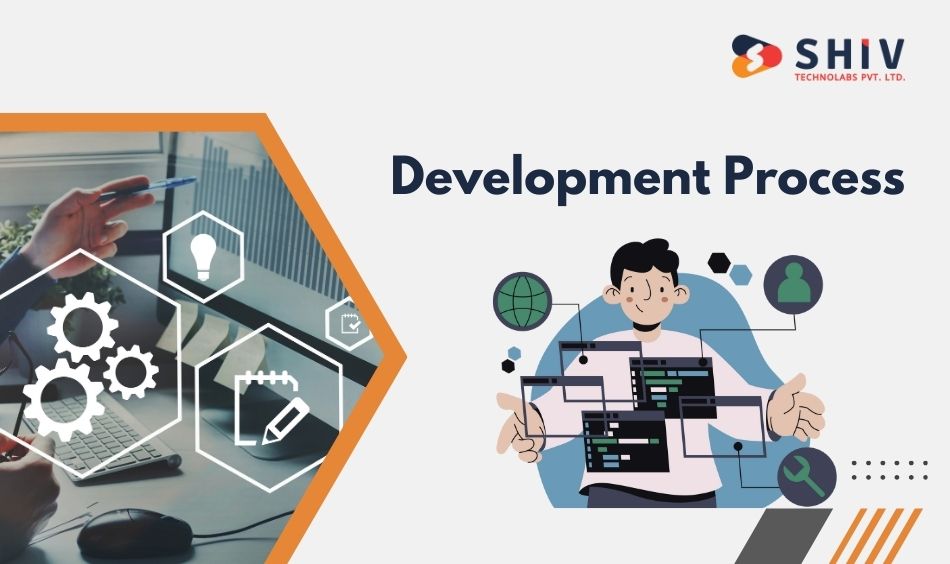
Building an app like Tazi.ai requires following a systematic development process. The development phases include:
# Requirement Analysis
Start by analyzing the user base and understanding the features they need. This step will help outline the core functionalities and set a clear development roadmap.
# Design & Prototyping
Before diving into full-fledged development, create wireframes and prototypes for the app. This process helps visualize the user interface and identify any usability issues early on.
# Backend and Frontend Development
Once the design is finalized, the backend and frontend development can begin simultaneously. The backend team focuses on the logic, data processing, and AI model integration, while the frontend team works on building the user interface.
# Integration of AI Models
Integrating pre-trained models or developing custom machine learning models is a crucial step. The models are deployed using frameworks like TensorFlow or PyTorch and are integrated with the app for real-time predictions.
# Testing & Validation
Testing the app thoroughly is critical for identifying potential bugs and ensuring the app functions as expected. This includes testing both the machine learning models and the overall user experience.
# Launch & Deployment
Once the app passes all tests, it’s time to deploy it on cloud services like AWS or GCP. The deployment should also include setting up monitoring tools to ensure smooth performance.
Challenges in Building an AI Application Like Tazi.ai
Developing an AI-driven app comes with several challenges. Some of the key obstacles include:
# Data Collection and Preparation
The quality of an AI model depends heavily on the data it’s trained on. Gathering large, clean datasets and preprocessing them can be time-consuming and complex.
# Model Maintenance
AI models need to be monitored and updated regularly to ensure they remain relevant as new data comes in. This requires a robust pipeline for continuous integration and delivery of new models.
# Scalability
As the number of users increases, the app must be able to scale without performance degradation. Leveraging cloud services with auto-scaling capabilities helps mitigate this challenge.
# User Adoption
While AI-based platforms are powerful, their success often hinges on how easily they can be adopted by non-technical users. Ensuring simplicity without compromising on functionality is a delicate balance.
Cost Breakdown Estimate for Building an App Like Tazi.ai
When estimating the cost to build a complex AI-driven application like Tazi.ai, various factors come into play, including the scope of features, technology stack, team composition, and time to market. Below is a detailed breakdown of the key cost factors for developing such a platform.
# Design Costs
Design is a crucial element in creating a user-friendly app. The design phase includes creating wireframes, mockups, and the final UI/UX design. The complexity of designing a no-code platform with data visualization features can impact the cost significantly.
- Wireframes and Prototyping: $3,000 – $8,000
- UI/UX Design (User Interface & User Experience): $5,000 – $15,000
- Total Design Costs: $8,000 – $23,000
# Backend Development Costs
The backend handles the core logic, AI model integration, data processing, and security. Building the backend for an app like Tazi.ai requires highly skilled developers, especially in areas like machine learning, data processing, and API integration.
- Machine Learning Integration (AutoML, Adaptive Learning): $20,000 – $50,000
- Database Setup & Management (e.g., MongoDB, PostgreSQL): $8,000 – $20,000
- API Development and Integration: $10,000 – $30,000
- Real-time Data Processing Setup: $12,000 – $25,000
- Total Backend Development Costs: $50,000 – $125,000
# Frontend Development Costs
Frontend development focuses on creating the user interface that interacts with the backend. This includes building dashboards, data visualizations, and the no-code/low-code environment that non-technical users will interact with.
- Frontend Development (React, Vue.js): $15,000 – $30,000
- Interactive Dashboard Development: $8,000 – $20,000
- Data Visualization Tools Integration: $10,000 – $25,000
- Total Frontend Development Costs: $33,000 – $75,000
# AI/ML Development Costs
Integrating machine learning algorithms and predictive models is a critical aspect of an app like Tazi.ai. The cost of AI/ML development can vary based on whether pre-trained models are used or custom models are built from scratch.
- AI Model Development (TensorFlow, PyTorch): $30,000 – $70,000
- Model Explainability and Transparency: $5,000 – $15,000
- Real-Time Prediction Models: $15,000 – $30,000
- Total AI/ML Development Costs: $50,000 – $115,000
# Cloud Infrastructure and Hosting
Cloud infrastructure is essential for scalability, storage, and performance. Hosting the application on platforms like AWS, Google Cloud, or Azure involves costs related to computing power, storage, and AI services like model training.
- Cloud Infrastructure Setup (AWS, GCP, Azure): $10,000 – $25,000
- Data Storage and Processing Costs: $5,000 – $10,000
- AI Services and Model Training Costs: $8,000 – $15,000
- Ongoing Maintenance and Hosting Fees: $2,000 – $5,000/month
- Total Cloud Infrastructure and Hosting Costs: $25,000 – $50,000 (initial setup)
# Security and Compliance
Given the sensitive nature of data used in an AI application, security and compliance are critical. The app must adhere to data protection regulations like GDPR, and secure data storage and transmission are essential.
- Data Encryption & Security Features: $5,000 – $10,000
- Compliance Setup (e.g., GDPR, HIPAA): $5,000 – $15,000
- Total Security and Compliance Costs: $10,000 – $25,000
# Testing and Quality Assurance
Rigorous testing is required to ensure that the app functions correctly and that AI models provide accurate predictions. This includes unit testing, integration testing, user testing, and security testing.
- Unit and Integration Testing: $8,000 – $12,000
- AI Model Accuracy and Performance Testing: $10,000 – $20,000
- User Acceptance Testing: $5,000 – $10,000
- Total Testing and QA Costs: $23,000 – $42,000
# Marketing and Launch Costs
Marketing and promoting an AI-driven platform require a strong strategy to reach your target audience. Initial costs will involve digital marketing, content creation, and partnerships.
- Digital Marketing and SEO: $5,000 – $10,000
- Initial Promotions and Launch Campaigns: $3,000 – $7,000
- Total Marketing and Launch Costs: $8,000 – $17,000
# Maintenance and Updates
Once the app is live, continuous maintenance, bug fixes, and feature updates will be needed to keep it running smoothly. This includes support for new AI models, security updates, and scaling as the user base grows.
- Monthly Maintenance and Updates: $2,000 – $5,000/month
# Team Composition and Hourly Rates
The cost also depends on the team you hire, which can include developers, data scientists, UI/UX designers, project managers, and QA specialists. Hourly rates can vary based on geographic location and expertise level.
- Developers: $50 – $150/hour
- Data Scientists/AI Engineers: $70 – $200/hour
- UI/UX Designers: $40 – $100/hour
- Project Managers: $50 – $120/hour
- QA Engineers: $40 – $90/hour
# Total Estimated Development Costs
Based on the above breakdown, the total cost of developing an app like Tazi.ai can range as follows:
- Low-end estimate: $180,000 – $220,000
- High-end estimate: $400,000 – $600,000
FAQs About Tazi.ai Like App Development
# What are the key technologies to build an AI-driven app like Tazi.ai in Turkey?
In Turkey, building an AI-driven app like Tazi.ai involves using technologies such as Python for machine learning, TensorFlow or PyTorch for AI models, and cloud infrastructure like AWS or Google Cloud to ensure scalability and data processing efficiency.
# How much does it cost to develop a Tazi.ai-like app in Turkey?
The cost of developing an app like Tazi.ai in Turkey can vary depending on the complexity of features, the development team’s expertise, and the chosen technologies. On average, the cost may range from $180,000 to $600,000.
# Is it possible to develop a no-code AI app like Tazi.ai in Turkey?
Yes, it is possible to develop a no-code AI app in Turkey. Many companies are adopting no-code/low-code solutions to allow non-technical users to create AI models without extensive coding knowledge, and developers in Turkey can implement this technology efficiently.
# What challenges might arise when developing an AI-driven app in Turkey?
Some challenges in developing AI apps in Turkey include ensuring data compliance with international regulations (like GDPR), managing large datasets for machine learning, and building scalable cloud-based systems to handle real-time data.
# Why should I choose Turkish developers to build an AI-driven app like Tazi.ai?
Turkish developers offer a combination of strong technical expertise and cost-effective solutions. Many companies in Turkey specialize in advanced AI and machine learning applications, providing high-quality development services at competitive prices.
Final Thoughts
Building an app like Tazi.ai involves a well-rounded understanding of AI technologies, machine learning frameworks, and scalable cloud infrastructure. By incorporating features such as AutoML, adaptive learning, and a no-code environment, and addressing challenges like data management and scalability, you can develop a powerful AI-driven application. Following a structured development process and leveraging the right tools can significantly reduce complexity and enhance your app’s success.
Looking for cutting-edge mobile app development solutions in Turkey? Shiv Technolabs is your go-to partner. As a leading Flutter mobile app development company in Turkey, we deliver scalable, high-performance applications tailored to your business needs. Additionally, our React Native app development services in Turkey ensure cross-platform compatibility with seamless user experiences. Let us help you bring your innovative ideas to life!

